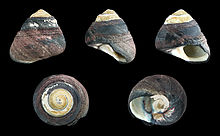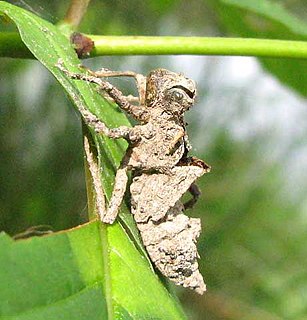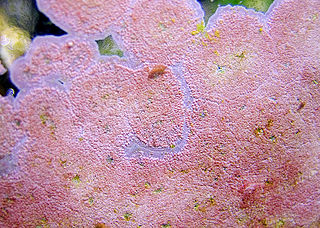
Tide pools or rock pools are shallow pools of seawater that form on the rocky intertidal shore. Many of these pools exist as separate bodies of water only at low tide.
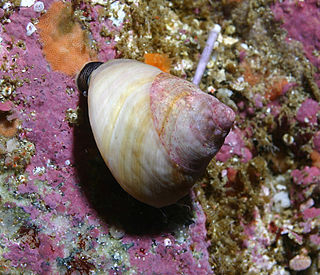
Tegula is a genus of small to medium-sized sea snails, marine gastropod molluscs in the family Tegulidae.

Vetigastropoda is a major taxonomic group of sea snails, marine gastropod mollusks that form a very ancient lineage. Taxonomically the Vetigastropoda are sometimes treated as an order, although they are treated as an unranked clade in Bouchet and Rocroi, 2005.

Cittarium pica, common name the West Indian top shell or magpie shell, is a species of large edible sea snail, a marine gastropod mollusk in the family Tegulidae. This species has a large black and white shell.

The marine snail Norrisia norrisii is a medium-sized gastropod mollusk within the family Tegulidae. It has several common names, including Norris's top snail, Norris's topsnail, norrissnail, smooth brown turban snail, or kelp snail. It was first described by G.B. Sowerby I under the name Trochiscus norrisii.

Lunella coronata, common name the crowned turban shell or the coronate moon turban, is a species of sea snail, a marine gastropod mollusk in the family Turbinidae, the turban snails.

Tegula viridula is a species of sea snail, a marine gastropod mollusk in the family Tegulidae.
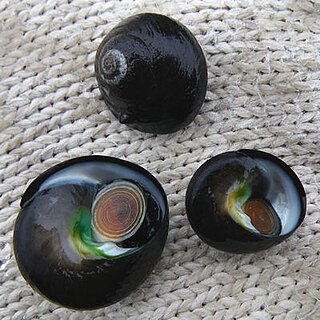
Chlorostoma is a genus of sea snails, marine gastropod mollusks in the family Tegulidae.

Tenguella granulata, common name the mulberry shell or the granulated drupe, is a species of sea snail, a marine gastropod mollusk in the family Muricidae, the murex snails or rock snails.

Nucella lamellosa, commonly known as the frilled dogwinkle or wrinkled purple whelk, is a species of sea snail, a marine gastropod mollusk in the family Muricidae, the murex snails or rock snails. This species occurs in the eastern Pacific Ocean, its range extending in the intertidal zone from the Aleutian Islands southward to central California.
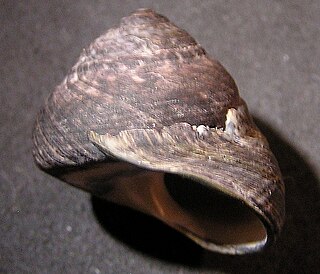
Tegula gallina is a North American species of sea snail, a marine gastropod mollusk in the family Tegulidae.
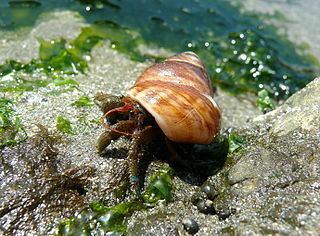
Pagurus samuelis, the blueband hermit crab, is a species of hermit crab from the west coast of North America, and the most common hermit crab in California. It is a small species, with distinctive blue bands on its legs. It prefers to live in the shell of the black turban snail, and is a nocturnal scavenger of algae and carrion.

Margarites pupillus, common name the puppet margarite or the little margarite, is a species of sea snail, a marine gastropod mollusk in the family Margaritidae, the turban snails.
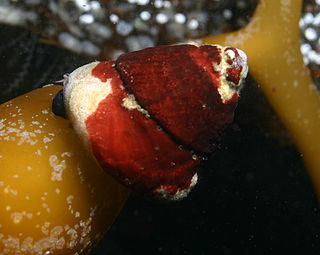
Tegula brunnea, common name the brown turban snail, is a species of medium-sized sea snail, a marine gastropod mollusk in the family Tegulidae,.

Tegula montereyi, common name the "Monterey tegula", is a species of sea snail, a marine gastropod mollusk in the family Tegulidae.
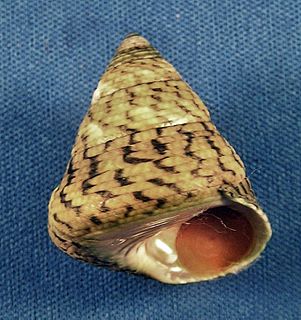
Tegula pellisserpentis, common name the serpent-tongue tegula, is a species of sea snail, a marine gastropod mollusk in the family Tegulidae,.

Tegula luctuosa is a species of sea snail, a marine gastropod mollusk in the family Tegulidae.
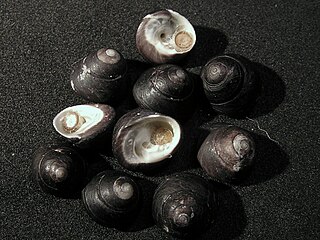
Tegula tridentata is a species of sea snail, a marine gastropod mollusk in the family Tegulidae.
Lottia asmi, commonly known as the black limpet, is a species of sea snail, a marine gastropod mollusk in the family Lottiidae. It is found in shallow water in the eastern Pacific Ocean, usually in the intertidal zone.
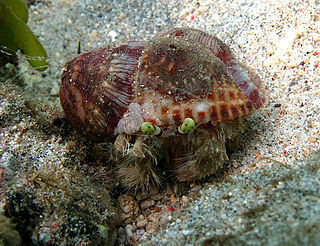
Dardanus deformis is a species of nocturnal hermit crab that is found in the Indo-Pacific. Its common name is pale anemone hermit. The species is known to transfer sea anemones from one shell to another when it moves to a different shell. It can be kept in an aquarium.

